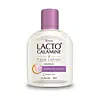What's inside
What's inside
 Key Ingredients
Key Ingredients

 Benefits
Benefits

 Concerns
Concerns

 Ingredients Side-by-side
Ingredients Side-by-side

Water
Skin ConditioningCaprylic/Capric Triglyceride
MaskingDiheptyl Succinate
EmollientCapryloyl Glycerin/Sebacic Acid Copolymer
Skin ConditioningGlycerin
HumectantPropanediol
SolventSodium Acrylates Copolymer
Lecithin
EmollientC12-15 Alkyl Benzoate
AntimicrobialPanthenol
Skin ConditioningSodium Hyaluronate
HumectantCaffeine
Skin ConditioningCoffea Arabica Seed Extract
MaskingCeramide EOP
Skin ConditioningCeramide Ns
Skin ConditioningCeramide NP
Skin ConditioningCeramide As
Skin ConditioningCeramide AP
Skin ConditioningPhytosterols
Skin ConditioningOleic Acid
EmollientLinolenic Acid
CleansingPotassium Hyaluronate
Skin ConditioningHydroxypropyltrimonium Hyaluronate
Hydrolyzed Hyaluronic Acid
HumectantHydrolyzed Sodium Hyaluronate
Skin ConditioningSodium Hyaluronate Crosspolymer
HumectantPentylene Glycol
Skin ConditioningButylene Glycol
HumectantSodium Retinoyl Hyaluronate
Zinc Hydrolyzed Hyaluronate
HumectantSodium Acetylated Hyaluronate
HumectantDimethylsilanol Hyaluronate
HumectantAscorbylpropyl Hydrolyzed Hyaluronate
HumectantAscorbyl Propyl Hyaluronate
Skin ConditioningLaminaria Digitata Extract
Skin ProtectingCetyl-Pg Hydroxyethyl Palmitamide
Skin ConditioningSodium Polyacryloyldimethyl Taurate
Emulsion StabilisingHydrogenated Polydecene
EmollientTrideceth-10
CleansingTocopheryl Acetate
AntioxidantSodium Benzoate
MaskingEthylhexylglycerin
Skin ConditioningPhenoxyethanol
PreservativeCI 19140
Cosmetic ColorantCI 16035
Cosmetic ColorantCI 42090
Cosmetic ColorantWater, Caprylic/Capric Triglyceride, Diheptyl Succinate, Capryloyl Glycerin/Sebacic Acid Copolymer, Glycerin, Propanediol, Sodium Acrylates Copolymer, Lecithin, C12-15 Alkyl Benzoate, Panthenol, Sodium Hyaluronate, Caffeine, Coffea Arabica Seed Extract, Ceramide EOP, Ceramide Ns, Ceramide NP, Ceramide As, Ceramide AP, Phytosterols, Oleic Acid, Linolenic Acid, Potassium Hyaluronate, Hydroxypropyltrimonium Hyaluronate, Hydrolyzed Hyaluronic Acid, Hydrolyzed Sodium Hyaluronate, Sodium Hyaluronate Crosspolymer, Pentylene Glycol, Butylene Glycol, Sodium Retinoyl Hyaluronate, Zinc Hydrolyzed Hyaluronate, Sodium Acetylated Hyaluronate, Dimethylsilanol Hyaluronate, Ascorbylpropyl Hydrolyzed Hyaluronate, Ascorbyl Propyl Hyaluronate, Laminaria Digitata Extract, Cetyl-Pg Hydroxyethyl Palmitamide, Sodium Polyacryloyldimethyl Taurate, Hydrogenated Polydecene, Trideceth-10, Tocopheryl Acetate, Sodium Benzoate, Ethylhexylglycerin, Phenoxyethanol, CI 19140, CI 16035, CI 42090
Water
Skin ConditioningKaolin
AbrasiveRicinus Communis Seed Oil
MaskingGlycerin
HumectantZinc Oxide
Cosmetic ColorantZinc Carbonate
PEG-100 Stearate
Glyceryl Stearate
EmollientPolysorbate 80
EmulsifyingHamamelis Virginiana Extract
AntiseborrhoeicCetearyl Alcohol
EmollientXanthan Gum
EmulsifyingPhenoxyethanol
PreservativeChlorphenesin
AntimicrobialParfum
MaskingCI 77491
Cosmetic ColorantCI 15850
Cosmetic ColorantCitronellol
PerfumingCoumarin
PerfumingLinalool
PerfumingBenzyl Alcohol
PerfumingHydroxycitronellal
PerfumingCinnamyl Alcohol
PerfumingAmyl Cinnamal
PerfumingIsoeugenol
PerfumingGeraniol
PerfumingBenzyl Salicylate
PerfumingBenzyl Cinnamate
PerfumingBenzyl Benzoate
AntimicrobialEugenol
PerfumingLimonene
PerfumingWater, Kaolin, Ricinus Communis Seed Oil, Glycerin, Zinc Oxide, Zinc Carbonate, PEG-100 Stearate, Glyceryl Stearate, Polysorbate 80, Hamamelis Virginiana Extract, Cetearyl Alcohol, Xanthan Gum, Phenoxyethanol, Chlorphenesin, Parfum, CI 77491, CI 15850, Citronellol, Coumarin, Linalool, Benzyl Alcohol, Hydroxycitronellal, Cinnamyl Alcohol, Amyl Cinnamal, Isoeugenol, Geraniol, Benzyl Salicylate, Benzyl Cinnamate, Benzyl Benzoate, Eugenol, Limonene
Ingredients Explained
These ingredients are found in both products.
Ingredients higher up in an ingredient list are typically present in a larger amount.
Glycerin is already naturally found in your skin. It helps moisturize and protect your skin.
A study from 2016 found glycerin to be more effective as a humectant than AHAs and hyaluronic acid.
As a humectant, it helps the skin stay hydrated by pulling moisture to your skin. The low molecular weight of glycerin allows it to pull moisture into the deeper layers of your skin.
Hydrated skin improves your skin barrier; Your skin barrier helps protect against irritants and bacteria.
Glycerin has also been found to have antimicrobial and antiviral properties. Due to these properties, glycerin is often used in wound and burn treatments.
In cosmetics, glycerin is usually derived from plants such as soybean or palm. However, it can also be sourced from animals, such as tallow or animal fat.
This ingredient is organic, colorless, odorless, and non-toxic.
Glycerin is the name for this ingredient in American English. British English uses Glycerol/Glycerine.
Learn more about GlycerinPhenoxyethanol is a preservative that has germicide, antimicrobial, and aromatic properties. Studies show that phenoxyethanol can prevent microbial growth. By itself, it has a scent that is similar to that of a rose.
It's often used in formulations along with Caprylyl Glycol to preserve the shelf life of products.
Water. It's the most common cosmetic ingredient of all. You'll usually see it at the top of ingredient lists, meaning that it makes up the largest part of the product.
So why is it so popular? Water most often acts as a solvent - this means that it helps dissolve other ingredients into the formulation.
You'll also recognize water as that liquid we all need to stay alive. If you see this, drink a glass of water. Stay hydrated!
Learn more about Water